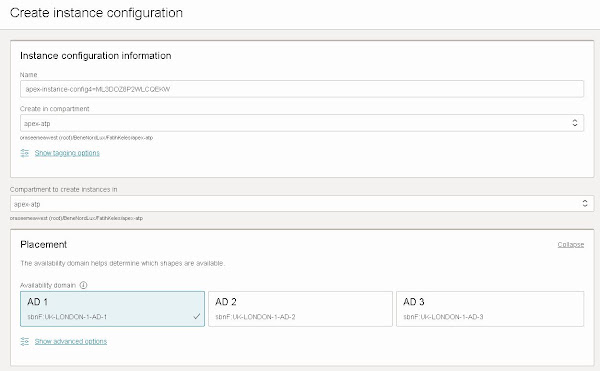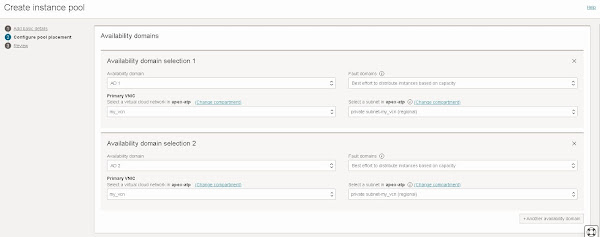I want to autoscale my ORDS servers based on CPU metric, so whenever the servers are busy and CPU utilized over 80% then a new node will be added to the instance pool and the backendset. You will need a loadbalancer configuration which I explained in this blog post. I have compute nodes that are running ORDS in standalone mode, you can find installation and configuration steps here .
On the compute node, I've installed java and ords and also configured to access database. Now I want to use this installation as a template for creating other nodes when I want to autoscale. Unfortunately if I use the instance as a source to my instance configuration, it will not include anything from the boot volume, but just the base image that the instance is launched from. More detail is here .
1So for that reason I will start by creating a custom image
I can use this oci cli command for the same purpose
2Then I create an instance configuration with the placement (compartment and AD) information
using my custom image which I've created in the first step
placing instance in my private subnet where all my ORDS nodes will be and attaching the network security group which will allow load balancer communication
I am adding my ssh key just in case I might need to access the servers
I also make sure that Bastion agent is enabled, plus put some piece of cloud-init script you don't see it here but it will not make a difference
I can also do the same thing with oci cli, you can find ords-instance-details file on my github
3Now I am going to create an instance pool which will create instances using the instance configuration I've just created.
Instance pool is distrubuting instances to availability domains for risk mitigation. Note that my subnets are regional, and instance will be in private subnet
And the launched instances will be placed in load balancer backend set. I am providing port information for health check.
Here is the oci cli command that can be used for creating the same instance pool in above screenshots. You can find ords-placement-configurations.json file on my github.
4I want my instance pool to scale-out and scale-in according to CPU utilization. For that purpose I am creating an autoscaling configuration for my recently created instance pool
Instance pool will scale-out according to CPU utilization metric, if the CPU usage is above threshold it will add one instance to the pool
I want the pool shrink with a scale-in threshold that will remove one instance. I want the pool have at least 3 instance at all times and don't want the pool grow beyond 6 instances.
Here is the oci cli command to create the autoscaling configuration, you can download ords-autoscaling-policies.json file from my github.
5For testing purposes I will use the following script. Script finds all the instances in the pool, and creates some CPU load which will trigger auto scaling policy to scale out. I've made some configuration to issue commands remotely which is explained here . Base custom image has some packages already installed for stress testing, you can read about it here














No comments:
Post a Comment